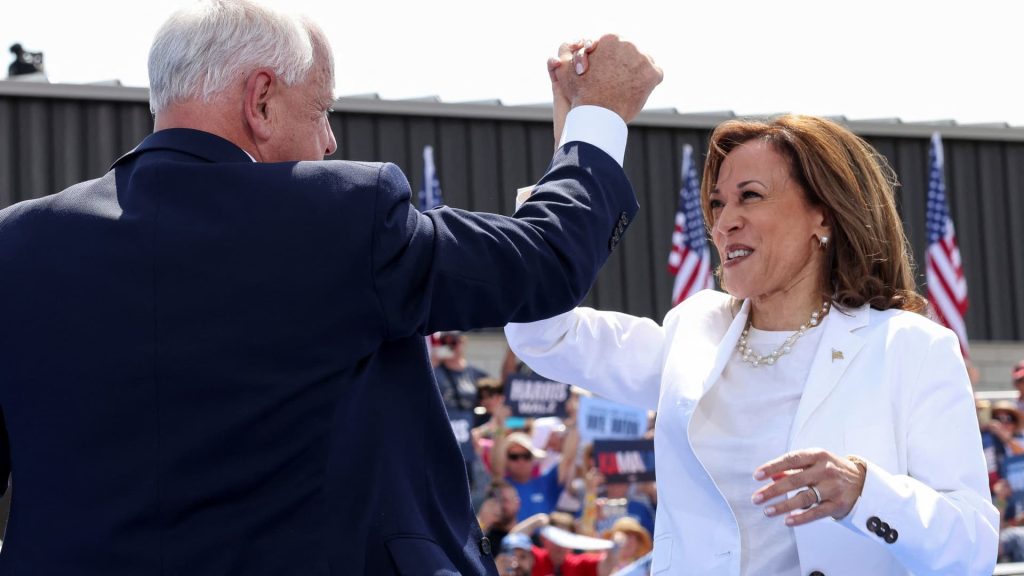One thing you hate is when a shibboleth that’s meant to exert and exact discipline actually loses you money. That’s how I have been feeling about the idea that giving up on value is a sin. Since the late ’80s, I have held that if you think that a company, or its brand, is valuable, you must fight to “keep it on your sheets,” the genuine Wall Street gibberish for holding on to the stock. But lately it’s been a bear for my Charitable Trust, the portfolio we use for the Investing Club, and I would apologize except it’s worked for so long I don’t know what to apologize for. Consider the case of now-former Club holding Wynn Resorts . The casino chain had been a strong-performing stock for years when Steve Wynn ran it. But it has become an unmitigated disaster because any company with China exposure has been horrendous, regardless of how good it is. We didn’t give up on Danaher despite the life science firm’s Chinese business. We thought it was too valuable. Same with GE Healthcare , although I am perturbed at myself for not recognizing its interest-rate sensitivity, and that if I wanted a medical device maker that emphasized science, I should have just bought Intuitive Surgical. But Wynn Resorts was intractable, and it has seen its valuation plummet on a number of metrics from price-to-earnings to enterprise value to EBITDA. It’s traded like the casinos are considered off limits to people in China. Nothing matters; it has to go down. We ultimately sold out of Wynn Resorts on Aug. 5 to raise cash to buy higher-quality stocks. Nothing has been worse than Club holding Estee Lauder , which reports its latest earnings report before the bell Monday. I have owned this stock for the Trust for years, watching longtime CEO Fabrizio Freda navigate cosmetics around the world. He seemed to have everything figured out — everything except something that seems a lot like the cultural revolution. Of course, one could argue that there is no value to be had in the stock. Even after the decline of mammoth proportions, the stock can’t find a footing. Because of the collapse of its Chinese business, it has become an extremely expensive growth stock that will most likely miss its numbers. It’s not protected by its 2.78% dividend yield. Alas, it is a first-class disaster, and we stayed invested because Freda, who has served as CEO since July 2009, had been able to bring out value before. He obviously can’t now. That is why Estee Lauder stock soared 6.6% Tuesday, the day Club holding Starbucks announced Laxman Narasimhan was out as CEO and Brian Niccol, the bankable Chipotle CEO, was taking over the top job next month . I like Freda, but to say that he’s distinguished himself here is to be a houseman for the executive. I am not. I can’t believe how flatfooted he was caught by the change in China. I am sure, like everyone else, when you talk critically in this business, the CEO in question unabashedly regards you as a doofus who doesn’t know anything, like a critic can’t speak unless he played professionally. I am not buying it; I am now certain that one needs a fresh pair of eyes. But it is a family-run business, which adds a layer of complexity to the situation and could make change more difficult. Why not get rid of it? We did trim some in late July. Now we are just hoping that we do get leadership change, and sticking around means we won’t kick ourselves because of what happened to Starbucks. And what exactly did happen? Last night, my wife Lisa and I were out with my “Squawk on the Street” co-host Carl Quintanilla at a lovely benefit for the Sag Harbor Cinema, a not-for-profit gem that makes the little Long Island town into a destination beyond a pretty port and some excellent restaurants. Everyone was incredibly nice, as is always the case when the cause is good and true. At one point, a terrific gentleman in the news business came over to me and congratulated me for getting Narasimhan fired, a reference to my May 1 interview with the executive after the coffee chain’s disastrous quarterly results. I quickly corrected him by saying Narasimhan was responsible because he offered up the answers that sounded like some sort of lecture and retreaded the same ideas as he’s been using since the fall, even as it was so clear that was not working. I can tell you that I didn’t expect what I got when he appeared on “Squawk on the Street” that day. I expected some contrition; we got none. I expected a recognition that the turnaround was not working; silly me, didn’t I know it was? I wanted a plan that addressed the need for a low-price latte; actually, no need. I wanted to discuss the idea that there are just too many new drinks on the menu; it was not open for question even as my daughter, a one-time barista, was bewildered with a tenth of the choices, and she defaulted into being the person who put designer hearts in the latte’s top layer. Suffice it to say that at any given moment, the “Fugitive”-style train wreck could have been avoided. But the Rubicon got crossed at roughly the second minute of the horror show. So, it was a pretty natural thing to see activists investors like Elliott Management show up — as I wrote in May that they might — because Starbucks is a phenomenal brand and, as frail as it seems, people still love it. I wasn’t privy to what happened and don’t pretend to know how much three-time CEO and founder Howard Schultz played a role. I do know that he was justifiably angry watching its performance disintegrate under Narasimhan. It’s the third time that Schultz, who remains a major shareholder, has been unhappy with his successor. But the numbers justified a change. My colleague David Faber asked me the other day what I thought Niccol could do at Starbucks. I was glib and just said something like, “Fix it.” The truth, though, is that Niccol is a fixer. He know food. He knows service. He knows the most important quality of this kind of business is order throughput. He’s battle-tested. He’s ridiculously qualified, and he will get the job done. Should the stock really have surged 24.5% on the announcement Tuesday? It’s a big change, and he’s a winning executive. More important, the market had lost all faith in Narasimhan and didn’t care for his consultant-like ways. Among the questions going forward: Can Niccol work with the lingering presence of Schultz, who now comes off as someone who won’t let go? Does Starbucks’ board know that there is no one better than Niccol so it won’t be easy to dislodge him if, at first, it doesn’t work out? But here’s the good news: There is a way to work it out. Ron Shaich, the man who built Panera Bread into an institution before stepping down as CEO in 2010, saw it at one time starting to flail. In his excellent autobiography, he tells the story of returning to the company — first as co-CEO then as sole CEO — to help boost growth and modernize its operations in the digital age. He knew it would be very hard to do. He knew that the chain was in an existential crisis. So, he set in motion “Panera 2.0,” which included some test stores in Charlotte, North Carolina, where he could tinker with what was needed. It took forever. A year later, I was begging him to come on “Mad Money” to talk to me about the result; he said they weren’t ready yet. It took more than a year, but when Panera 2.0 was ready, it took the country by storm. If Niccol does it this way, I am confident today’s stock will look cheap. Was Narasimhan that bad? No, Niccol is that good. Narasimhan didn’t have the restaurant skillset. He was from packaged goods, a minor portion of the job. Dishwasher detergent and coffee? Who thought of that. Now, in fairness to Narasimhan, he had to deal with a boycott of Starbucks by pro-Palestinian supporters. This was a tough one. The fact that it took a stand against all violence is noble. Most important, though, there was seemingly nothing that Narasimhan could have done, and it really did hurt sales. Still, the fact is that sales were going down anyway as stores struggled with throughput and some customers took issue with prices. Here’s an interesting question: What exactly is the value of Starbucks? Right now, there isn’t a complimentary word on anyone’s lips about the place. I would say that, in some ways, is the value. The bar is so low, the situation so bad, Niccol has the world’s greatest cover. He can tinker and make significant changes all over the globe. He can come up with a strategy if there is another boycott. He can figure out labor as he did at Chipotle. He knows throughput better than anyone on earth. Go read his last few conference calls. He’s the maestro. Lots of things had to go right to get this stock back in the $90s per share. You needed no dallying and a clean break with Narasimhan. You needed to find the best guy in the business and be sure he would even take the job given the history of people who have tried to run the place independent of its legacy. You needed activists who concentrated the minds of the board. You needed a belief that it can saved and that Niccol is the person to do it. All of these boxes were checked. That makes me want to continue to own it. But, in the end, this was a highly unusual set of circumstances not easily duplicated in an Estee Lauder or a Wynn. I am not holding my breath on those. But for Starbucks? Let’s just say that for the first time since we bought it , shortly before Narasimhan was named incoming CEO, I can actually breathe. (Jim Cramer’s Charitable Trust is long SBUX and EL. See here for a full list of the stocks.) As a subscriber to the CNBC Investing Club with Jim Cramer, you will receive a trade alert before Jim makes a trade. Jim waits 45 minutes after sending a trade alert before buying or selling a stock in his charitable trust’s portfolio. If Jim has talked about a stock on CNBC TV, he waits 72 hours after issuing the trade alert before executing the trade. THE ABOVE INVESTING CLUB INFORMATION IS SUBJECT TO OUR TERMS AND CONDITIONS AND PRIVACY POLICY , TOGETHER WITH OUR DISCLAIMER . NO FIDUCIARY OBLIGATION OR DUTY EXISTS, OR IS CREATED, BY VIRTUE OF YOUR RECEIPT OF ANY INFORMATION PROVIDED IN CONNECTION WITH THE INVESTING CLUB. NO SPECIFIC OUTCOME OR PROFIT IS GUARANTEED.
One thing you hate is when a shibboleth that’s meant to exert and exact discipline actually loses you money. That’s how I have been feeling about the idea that giving up on value is a sin. Since the late ’80s, I have held that if you think that a company, or its brand, is valuable, you must fight to “keep it on your sheets,” the genuine Wall Street gibberish for holding on to the stock.
Read the full article here
Post Views: 221







